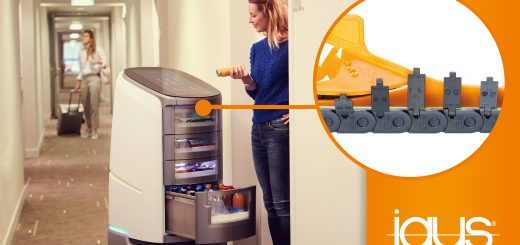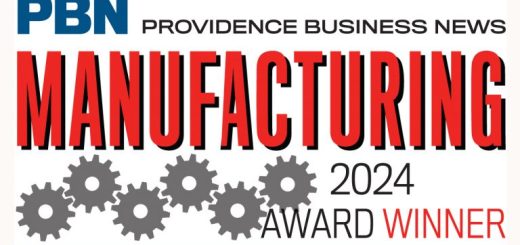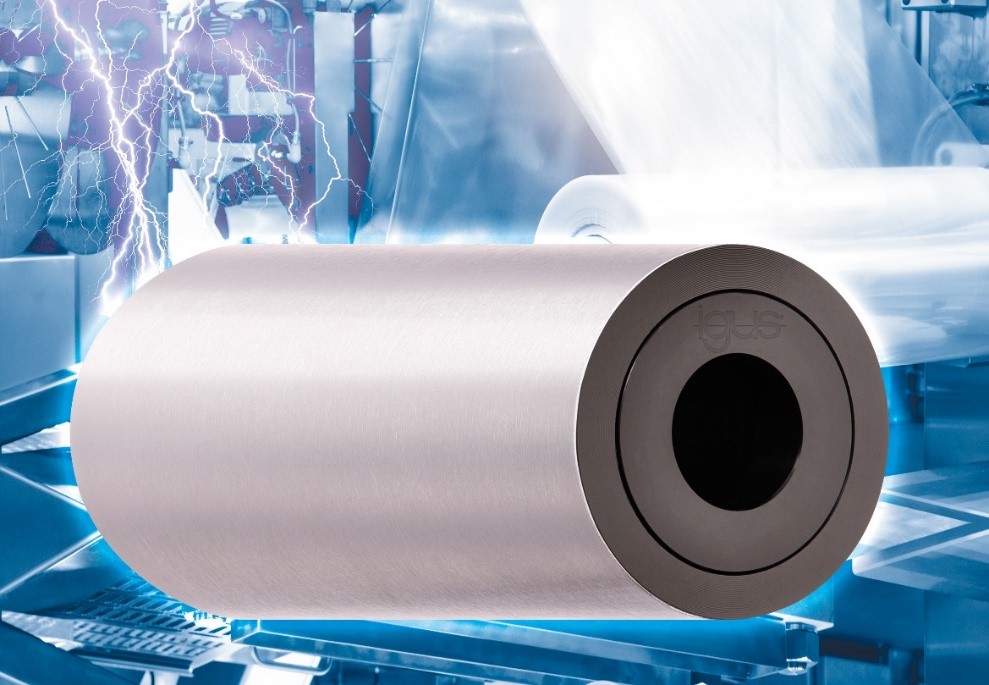Additive Manufacturing: What You Need to Know
March 4, 2020 – Additive manufacturing refers to a process by which digital 3D design data is used to build up a component in layers by depositing material. It is becoming more widely used, and has many advantages. Paul Gomer, an additive manufacturing development engineer at igus, offers insight on additive manufacturing.
How do you rate the development of additive manufacturing? Will it replace or replace other procedures? Which are they?
Additive manufacturing is becoming increasingly important in production. The advantages are obvious: I can produce customer-specific components in a short time, without any tool molds or changeover costs. The customer benefits immensely from this because he receives his specific part quickly and at a lower price. That is why we at igus have significantly increased capacities in additive manufacturing. In addition to the FDM and SLA printers, the majority of the 3D-printed special solutions are now produced on SLS printers with two available Tribo materials. Nevertheless: in comparison, injection molding today still allows a significantly higher output at lower costs. It always depends, do I only need one or two parts, a small or medium series or do I go into mass production. Depending on the answer, as a customer I choose the manufacturing process that suits me and keeps costs down for me.
Additive manufacturing always involves two things: precise 3D printers and high-performance materials. What requirements do such materials have to meet?
We focus on wear resistance when manufacturing special parts. This is the be-all and end-all. Comparative tests in our test laboratory have shown that the wear resistance of the additively manufactured parts is absolutely comparable with the corresponding injection molded parts. Nevertheless, the material selection in 3D printing is currently still significantly less than in injection molding. In injection molding, for example, there are reinforced materials that we cannot currently process in this way.
What trends can you see in the development of new materials for 3D printing? What will be possible soon?
In principle, many materials can already be processed using 3D printing, for example ceramics, metals, standard, technical plastics or, as with us: high-performance polymers. The industry recognizes that well-known material suppliers have now also gotten involved in the topic. There is the ability to develop materials specially adapted for 3D printing and thus qualify previously impossible materials, for example for filament printing. This also makes the materials easier to process and the parts much more resilient. This allows the use of this technology in demanding areas and industries. An exciting question is the economical (series) production of multi-material components for the introduction of even more targeted material properties. In individual cases, hard-soft combinations can already be implemented, but further technological developments are still required for scalability.
What are the challenges?
The FDM process is currently more suitable than the SLS process because the technology is less demanding but more flexible. Due to the higher productivity of the SLS process, the handling of multi-materials needs to be further developed. The challenge remains for the user and the designer to offer an established and broader selection of materials with reliable and traceable material properties. One topic here is to improve the orientation-dependent and process-specific anisotropic property differences. Another aspect is compliance with quality assurance standards, which are required in many industries such as automotive or aviation.
Are there any new materials currently? What are they and what are their characteristics? Are there any unique selling points for igus?
We recently developed our lubricant-free material iglide J350 into a tribo filament. To do this, we would have to design a new high-temperature printer that can process the filament. In the new 3D printer, we rely on the igus standard components that work reliably even at high installation space temperatures. We use a nozzle that is at a temperature of up to 400 degrees Celsius.
The filament can melt. With iglide J350 we were able to develop a new filament for high-temperature environments and test it extensively. The high-performance plastic is characterized by its extremely high wear resistance and its very low coefficients of friction on steel. The endurance runner is particularly suitable for rotations and has a high dimensional stability at temperatures up to 180 degrees Celsius. Medium to high loads are no problem for iglide J350.
How do you go about developing new materials?
First and foremost, when developing a new material, we respond to specific customer requests that result from the wide range of applications. At the same time, materials must meet industry-specific requirements and be easy to process. In the area of 3D printing, materials have to be developed specifically for the respective manufacturing technology, since the additive processes differ significantly in detail. Our primary focus in material development is the evaluation of the process capability of a material and the early analysis of wear resistance. Standard test components are manufactured and extensively tested on our test benches.
What needs to be considered for special solutions such as cosmetics and food? Are there other special solutions?
In the area of the cosmetics and food industry there are special requirements, for example by the EU. With iglide I150, we have therefore developed a filament that complies with EU Regulation 10/2011. This is particularly easy to process using the FDM process. Industries and applications in hygienically sensitive areas, for example in the pharmaceutical and food industries, benefit from iglide I150.
Could you tell us something about the worm gear user example and the iglide I6-PL laser sinter material? What was the task, the big challenge and how could you master it?
The worm wheels are used, for example, in our Robolink gearboxes and therefore also in articulated arm robots. On the one hand, these must be easy and inexpensive, but above all, be wear-resistant. That is why we developed the iglide I6 laser sintering material for such applications. For iglide I6 it was shown that the material has a particularly high wear resistance and therefore a particularly long service life. A worm gear with 5 Nm torque and 12 rpm was tested in comparison with the materials previously used for SLS printing. The worm wheel made of the new iglide I6-PL laser sintered material showed only slight wear after 1 million cycles and was still fully functional. Milled worm gears made of POM showed total wear after only 621,000 cycles, while milled worm gears made of PBT already broke after 155,000 cycles.
What options do you have in your test laboratory? What is going on there? Are there any identifiable benefits or even unique selling points?
Our entire area for application and material testing extends over 3,800 square meters. Every business area has its own test laboratory here and we test some product areas together. For example, we test the chainflex cables in our own energy chains on 1,500 square meters. There is an outdoor area of 2,000 square meters available for particularly long travel distances. iglide plain bearings, drylin linear bearings and our low-cost automation components are tested on a good 300 square meters. This means that we operate not only the largest test laboratory in terms of area, but also the one with the highest number of product tests and test procedures. In addition to coefficient of friction test stands, wear rates are determined, for example, for linear, swivel and rotation applications. If necessary, we also test customer-specific under real conditions. The special added value for our customers lies above all in our numerous free online tools with test results in prepared form. In particular, our life cycle calculator helps you select and purchase the right products. With just a few details about its application, the customer can get an overview of suitable articles from 58 iglide materials – including 3D printing materials.
What does the 3D printing service include? What are the advantages for the customer?
In the 3D printing service, the customer can upload the STEP file of their desired component, after which they have the option of choosing the right material for their application. So, he also determines the manufacturing process. For example, if the customer would like to produce a part ready for series production from an iglide material that we cannot process using 3D printing, the Print2Mould process is ideal. Here we manufacture an injection molding tool in 3D printing, which is then inserted into the injection molding machine. Alternatively, the customer can also have their part manufactured using the SLS process with our two laser sintering materials iglide I3 and iglide I6 or use 3D printing of their part using the FDM process with one of our 7 tribologically optimized FDM materials. The customer always has a wide selection of materials, as well as a transparent cost overview and can easily order their desired part online at any time.



